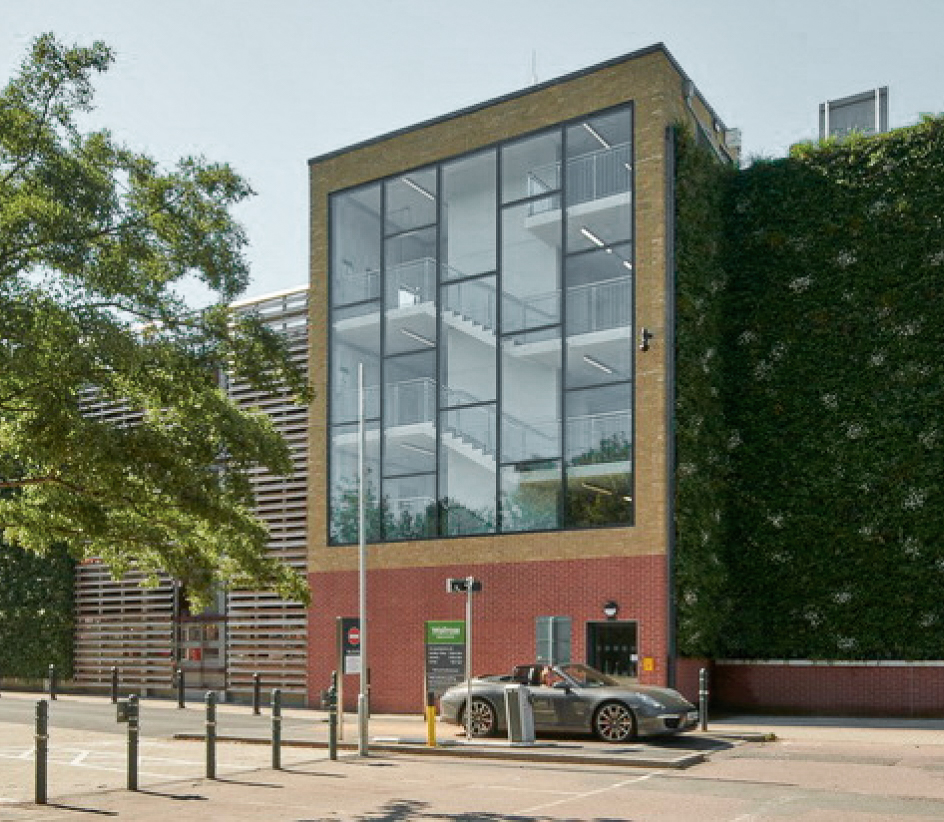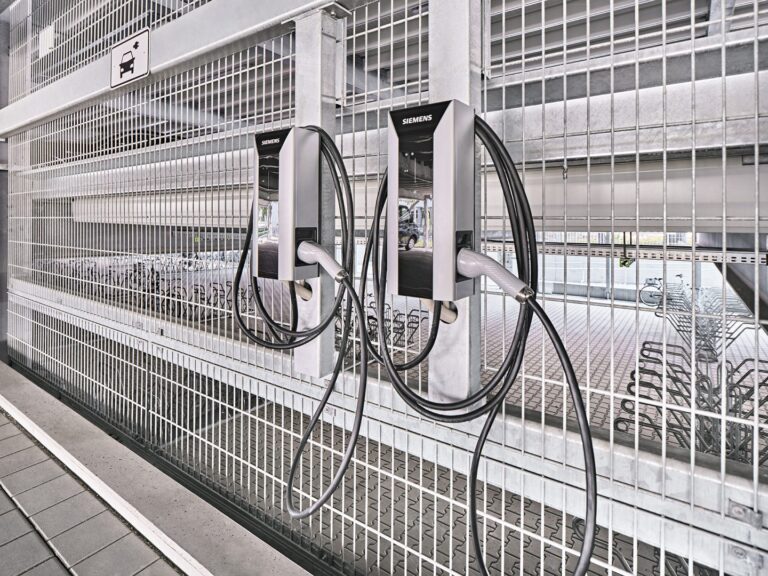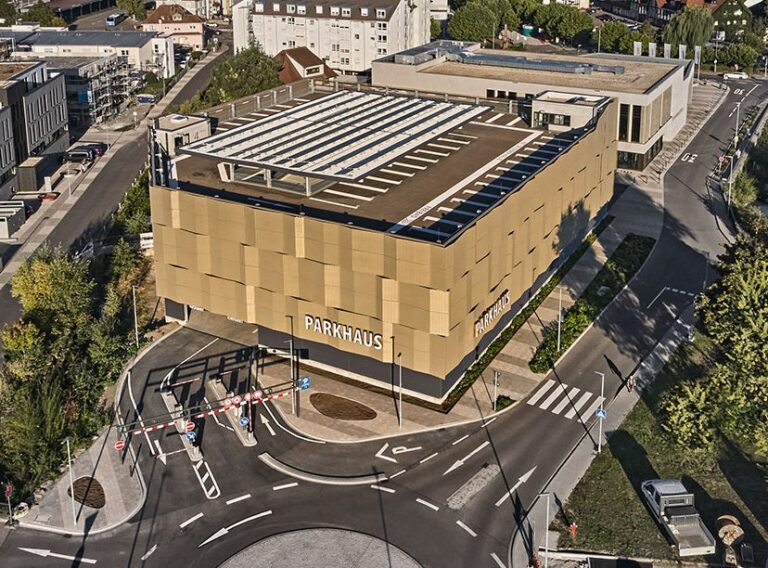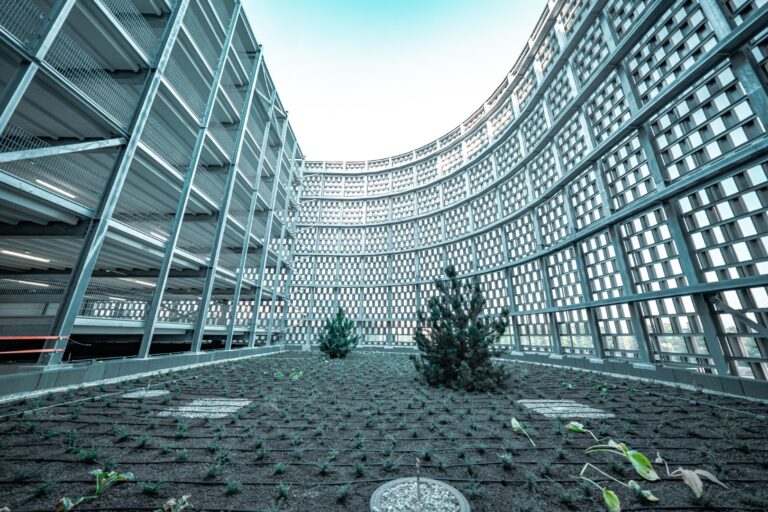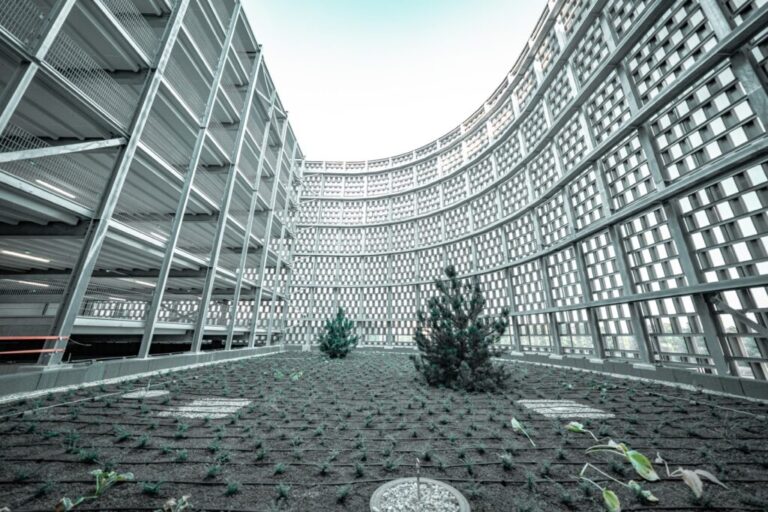
Ambition.
Future-proof car parks that retain their value over the long term.
The construction industry is a major contributor to global greenhouse gas emissions: the most sustainable building is the one you don’t build at all. Therefore, it is our aim to always build car parks that last as long as possible. Modernising, extending and raising existing car parks also makes good environmental sense, and we are happy to advise you on this. When building new car parks, we look for ecologically, socially and economically sustainable solutions. Key points are: Energy efficiency, resource conservation, water and waste management, user comfort and health, and the integration of mobility solutions. To take all these factors into account, you need to look at the entire life cycle and be able to take into account all the trades involved – from analysis to circularity and from application interface to attenuation tank. Sustainability requires logic and a system: Huber Parking projects are intelligently planned, executed to a high standard and professionally maintained. Careful selection of building materials and a durable finish are essential: we protect our surfaces with systems that extend the life of the car parks and improve their appearance at the same time. The result for you: future-proof car parks that retain their value over the long term.
Certification.
Sustainability can be proven.
It is possible to have your company’s green credentials certified. Huber Parking can advise you on the options available. Certifications that assess the sustainability of car parks include BREEAM, DGNB and LEED. Life cycle analysis can be used to determine the carbon footprint of the proposed building during the tendering phase and, depending on the results, to optimise it by making appropriate adjustments. As a building owner, you can influence CO2 savings by making active choices.
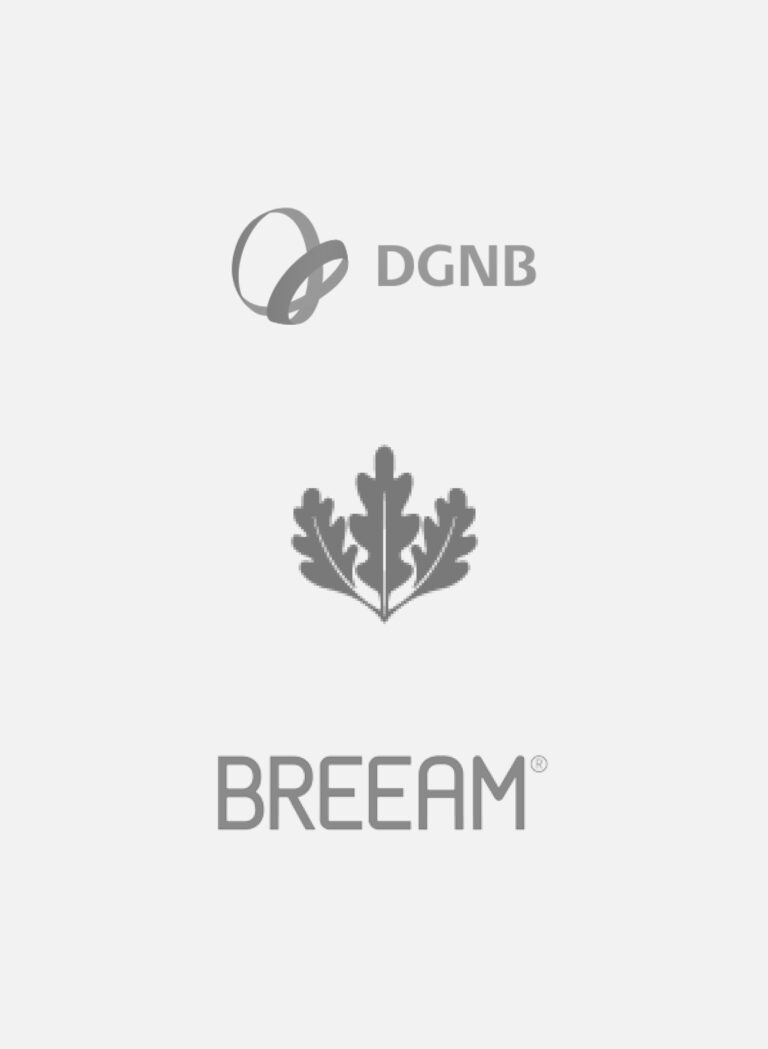
Materials and Construction.
Less is more.
Resource and Material Management
A well thought-out concept and design are essential to maximise the sustainability potential of a car park during its subsequent operation. Key factors are the materials used and the construction methods employed. The amount of building materials alone plays an important role: steel and cement represent so-called grey energy. The Huber Parking Flex System, however, with its highly optimised composite steel construction method, reduces the materials used to a minimum. This means lighter components and less embodied energy as well as reduced emissions during transport.
New Materials
The carbon footprint of your car park can be significantly reduced by using renewable, durable building materials. Wherever possible, we use materials that are recyclable or have already been recycled. This includes sustainably sourced timber – particularly for façades - or materials that have already been recycled. We are also investing in the research and development of new materials: carbon concrete is one of the most promising building materials of the future. This composite material is extremely strong, corrosion resistant and durable. It is 4.5 times lighter than steel. It also has 9 times the tensile strength of reinforcing steel. In relative terms, carbon composite is 40 times stronger. When used as a composite with steel, this means significantly less material, less weight and fewer emissions. And at the end of its life cycle, 99% of carbon concrete can be separated by type and recycled. Huber Parking is not only supporting this innovation as a member of the C3 Carbon Concrete Composite Association but is also providing significant support to the start-up company Carbon 360 in the development of facade panel, retaining wall and floor slab modules.
Digital Design
By streamlining processes at the concept and design stage with intelligent digital tools, we minimise design errors, costs and energy. We also maximise the amount of material that can be recycled at the end of its life cycle. Smart digital design also helps us to optimise logistics processes. The bottom line for you is minimised CO2 emissions during the construction phase and the most valuable "second life" possible for your car park at the end of its life cycle.
Learn more about BIM
Digital car parkLearn more about the Flex System
Flexible systemIntelligent Energy Efficiency.
Intelligent Lighting
Sustainable multi-storey car parks save energy. For example, significant amounts of energy are used for lighting, as security needs to be maintained even when the car park is in use at night. Efficient and intelligent car park lighting systems (IPS) therefore have a significant impact on operating costs. LED solutions provide optimal and uniform illumination with low energy consumption. Combine this with sensors and the savings are multiplied: the lights then only react to movement and are only activated when light is actually needed.
Photovoltaic & Wind
Sustainable multi-storey car parks generate and store electricity. Their generally flat and relatively high roofs are ideal for generating renewable energy. Both photovoltaic and wind power systems can be used - in combination, of course. Integrated energy storage systems help to optimise the use of the CO2-free energy generated. The benefit for you: independence from the electricity grid and rates, because with an intelligently controlled energy management system, your car park can be energy self-sufficient, or perhaps even supply the rest of the property (office/shopping centre/hospital etc.) with its own electricity. You can even earn money by selling excess energy back to the grid, as PV modules can currently generate up to 420 kWh of electricity per year. There is another synergy that can be achieved by using a PV system on a green roof: roof cooling.
E-Mobility
Sustainable multi-storey car parks promote alternative mobility solutions. Bicycle parking spaces, car-sharing facilities, good public transport links, etc.: our aim is to encourage people to use environmentally friendly modes of transport. This is why we design and build MSCPs as mobility hubs strategically located near public transport and cycle paths and consider bus platforms and related recreational areas. Charging points for electric cars and e-bikes are also included. In the future, car parks could also offer important added value through buffer storage: Thanks to vehicle-to-grid technology (V2G technology), electric vehicles could become valuable energy suppliers and stabilisers for the electricity grid. This requires the optimisation of bi-directional charging technologies and the high-voltage batteries of electric vehicles.
Intelligent Water Management.
Drainage Systems
Sustainable multi-storey car parks use water sparingly. Modern rainwater retention systems infiltrate and store rainwater that accumulates on the site, allowing it to be reused or discharged into the public sewer system at a reduced flow rate. Particularly during periods of heavy rainfall, which are increasingly causing flooding in sealed urban areas, modern car parks help to relieve pressure on sewer systems. Attenuation tanks are ideal for watering green areas in, on and around the car park, which in turn promotes biodiversity.
Green & Retention Roofs
Sustainable multi-storey car parks collect rainwater in different ways. Huber Parking recommends retention roofs. They are not only a symbol of urban sustainability, but above all an innovative and efficient solution for the retention and reuse of rainwater, as they temporarily absorb the precipitation and release the moisture in a controlled manner. In addition, the plants promote the evaporation of water. In an era of climate change, these roofs demonstrate how modern architectural solutions can serve the needs of both people and the planet, especially when it comes to managing vital resources such as water.
Intelligent Microclimate.
Façade & Roof Greening
Sustainable multi-storey car parks are green. We mean that literally: green roofs and façades perform important functions beyond their visual appeal. Firstly, they help improve the urban microclimate by cooling the building and reducing the urban heat island effect. Second, they improve air quality – an important factor in urban centres. Thirdly, they provide important habitats for plants and animals. This creates sustainable oases in the middle of the urban environment, which are also perceived by people as pleasant places to spend time and which the prefer to use. After all, green spaces with moss, grass or leaves have a calming effect on people.
Natural Ventilation
Sustainable multi-storey car parks use natural ventilation to save energy costs. Huber Parking builds open car parks where at least one third of the façade is open. This eliminates the need for mechanical ventilation systems. The aim is to take people's health into account and increase user comfort. This is a particularly important in multi-storey car parks due to the relatively high traffic density. At the same time, our intelligent systems help to save energy. Especially when they are combined with green façades and roofs: More than 90% of the solar energy captured by the greenery is used for evaporation. This has a cooling effect. Green spaces also measurably improve air quality.
Human Activities
Sustainable multi-storey car parks provide attractive recreational spaces. They can therefore address important aspects of urban design and landscape architecture and have a positive emotional and social impact on the microclimate. Mobility hubs can provide space not only for additional services that make everyday life easier, but also for social interaction: Swap shops, espresso bars, co-working spaces – the sky’s the limit. Anything that adds value to the transitional spaces of urban mobility can be integrated to make these future transport hubs more attractive to users.
